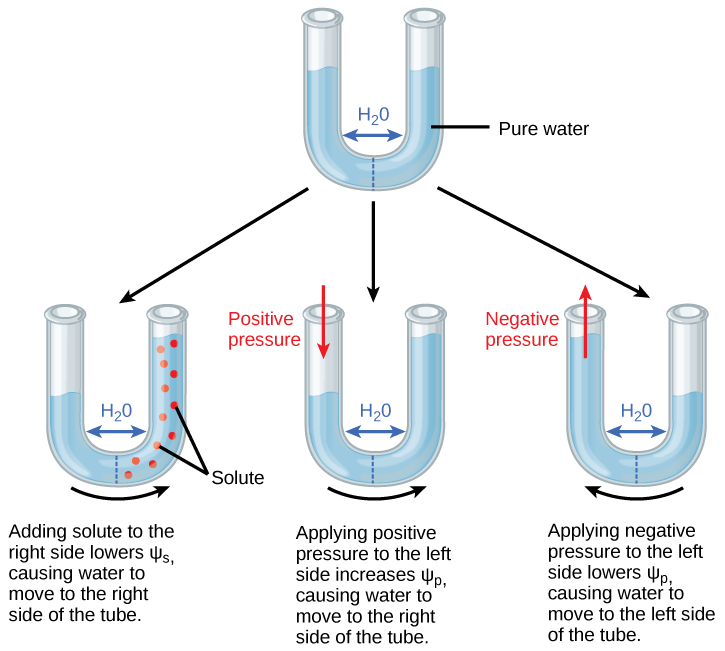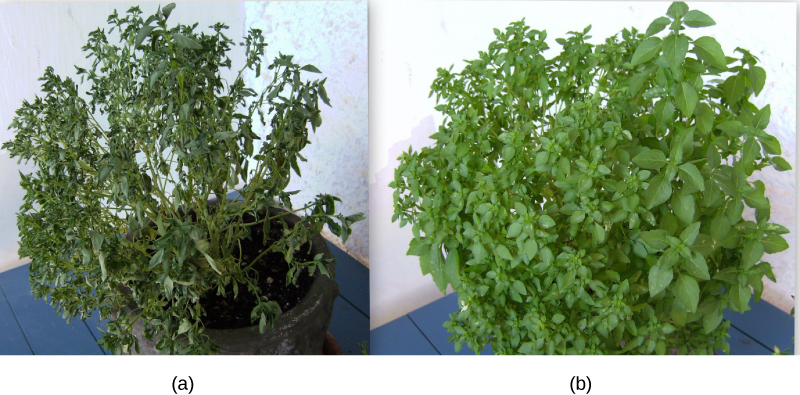| << Chapter < Page | Chapter >> Page > |
Water only moves in response to changes in water potential, not in response to the individual components. However, because the individual components influence the total water potential of the system, by manipulating the individual components solute concentration, a plant can control water movement.
Solute potential, also called osmotic potential, is negative in a plant cell and zero in distilled water. Typical values for cell cytoplasm are –0.5 to –1.0 MPa. Solutes reduce water potential (resulting in a negative water potential) by consuming some of the potential energy available in the water. The internal water potential of a plant cell is more negative than pure water because of the cytoplasm’s high solute content ( [link] ). Because of this difference in water potential water will move from the soil into a plant’s root cells via the process of osmosis. This is why solute potential is sometimes called osmotic potential.

Pressure potential, also called turgor potential, may be positive or negative ( [link] ). Because pressure is an expression of energy, the higher the pressure, the more potential energy in a system, and vice versa. An example of the effect of turgor pressure is the wilting of leaves and their restoration after the plant has been watered ( [link] ). Water lost from the leaves via transpiration is restored by uptake via the roots.
A plant can manipulate turgor pressure via its ability to manipulate solute concentration and by the process of osmosis. If a plant cell increases the cytoplasmic solute concentration water will move into the cell by osmosis. Turgor pressure is also under indirect plant control via the opening and closing of stomata. Stomatal openings allow water to evaporate from the leaf, reducing the water potential of the leaf and increasing it between the water in the leaf and the petiole, thereby allowing water to flow from the petiole into the leaf.

Gravity potential is always negative to zero in a plant with no height. It always removes or consumes potential energy from the system. The force of gravity pulls water downwards to the soil, reducing the total amount of potential energy in the water in the plan. The taller the plant, the taller the water column, and the more influence gravity has. On a cellular scale and in short plants, this effect is negligible and easily ignored. However, over the height of a tall tree like a coast redwood, the gravitational pull of –0.1 MPa is equivalent to an extra 1 MPa of resistance that must be overcome for water to reach the leaves of the tallest trees.

Notification Switch
Would you like to follow the 'Principles of biology' conversation and receive update notifications?